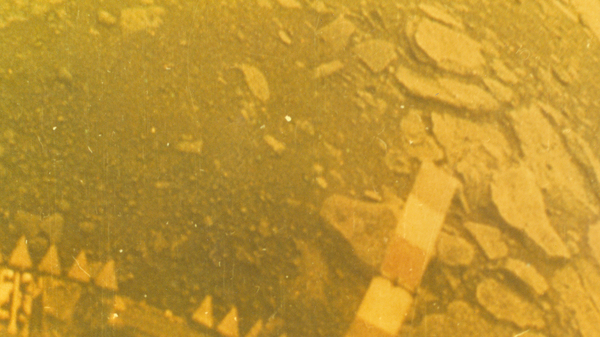Venus: Our Twin Planet
The brightest planet in our sky, Venus has much in common with Earth.

In many ways, Venus is the most Earth-like planet in the solar system.
©NASA
July 2024: Venus returns as the evening star
A Brief Overview of Venus
Venus is the second planet from the Sun, and the closest to Earth’s orbital path. It is a rocky planet, and its size, structure, and chemical composition is similar to that of Earth. For this reason, Venus is often called Earth’s twin.
Compare the sizes and order of the planets
At the same time, Venus is dramatically different from Earth. The planet is covered by thick clouds of sulfuric acid, and the average surface temperature is about 480 degrees Celsius (900 degrees Fahrenheit)—making it the hottest planet in the solar system.
Where Is Venus in the Sky?
Find and track Venus with our Interactive Night Sky Map
Check the weather in your town or city
When Is the Best Time to See Venus?
Venus usually is easy to spot: it’s the third brightest object in our sky after the Sun and the Moon. The planet lies closer to the Sun than the Earth, which means it always appears near the Sun, generally just before sunrise or just after sunset. As a result, the planet is affectionately known as the “morning star” or “evening star.”
The hidden patterns of Venus’s movement across the sky
Venus is visible as a morning star for around 263 days (about eight and a half months). Its farthest point from the Sun in the early-morning sky is called its greatest elongation west.
The planet then disappears behind the Sun for about 50 days before reappearing as an evening star for another roughly 263-day period. Its farthest distance from the Sun in the evening sky is referred to as greatest elongation east. Venus becomes invisible again for about eight days—this time passing in front of the Sun—before coming back into view as a morning star.
This entire cycle takes about 584 days (just over one year and seven months). The moment when Venus passes directly behind the Sun is termed superior conjunction; the moment when the planet passes between Earth and the Sun is inferior conjunction.
Next greatest elongation east: January 10, 2025
Next inferior conjunction: March 23, 2025
Next greatest elongation west: June 1, 2025
Next superior conjunction: January 6, 2026
Previous superior conjunction: June 4, 2024
Previous greatest elongation west: October 23, 2023
Previous inferior conjunction: August 13, 2023
Previous greatest elongation east: June 4, 2023
How far is Venus from Earth right now?
Other Times to See Venus
On rare occasions, Venus aligns perfectly with the Sun and the Earth and can be observed as a black spot crossing—or transiting—the Sun’s disk. However, the next transit of Venus will not be until December 10/11, 2117.
Venus can also be seen as a bright star close to the obscured Sun during a total solar eclipse.
When is the next total solar eclipse?

Venus can often be seen next to a Crescent Moon in the morning or (as above) evening sky.
©iStock.com/shaunl
How Long Is a Day and a Year?
Of all the planets in our solar system, Venus rotates the slowest: it takes around 243 Earth days to complete one spin (compared to Earth’s roughly 24 hours). Venus and Uranus are the only planets with retrograde rotation. This means the direction of their spin (clockwise, as seen from above the Sun’s north pole) is the opposite direction to their orbit around the Sun (counterclockwise).
A tropical year on Venus is approximately 225 Earth days. A Venusian solar day is about 117 Earth days.
How Many Moons Does Venus Have?
Venus and Mercury are the only planets in the solar system with no moons.

Spacecraft cannot survive for long on Venus’s hellish surface. This photo was taken by the Venera 13 lander during its 127 minutes of operating time on March 1, 1982.
©ROSCOSMOS
Human Exploration of Venus
The earliest known recorded observations of Venus date back to around the 17th century BCE in Babylon. In 1610 Galileo observed the planet with a telescope and found it showed phases similar to the Moon’s.
The first successful spacecraft mission to Venus—or any other planet—was Mariner 2. It flew by the planet at a distance of about 34,800 kilometers (21,600 miles) on December 14, 1962. A few years later, the Venera 3 spacecraft crash-landed on Venus on March 1, 1966, becoming the first man-made object to strike the surface of another planet.
A decade later, on October 22, 1975, the Venera 9 lander survived for 53 minutes before succumbing to Venus’s high temperatures and pressures. While it was functioning, it sent back the first photographs from the surface of another planet.
How Long Does It Take to Get to Venus?
The best time to travel to Venus is when it is closest to the Earth, around the time of inferior conjunction. This launch window occurs approximately every one year and seven months. A typical journey time is around four or five months.
Mariner 2
- Launched: August 27, 1962
- Arrived: December 14, 1962 (flyby)
- Journey time: 3 months and 17 days
Venera 9
- Launched: June 8, 1975
- Arrived: October 22, 1975 (landed)
- Journey time: 4 months and 14 days
Venus Express
- Launched: November 9, 2005
- Arrived: April 11, 2006 (entered orbit)
- Journey time: 5 months and 2 days
All dates are shown in UTC.